Review Summary
Expert Rating
A new year has begun, and on cue, South Korean smartphone giant Samsung has announced its new flagship smartphones. The Galaxy S21 series consists of three devices which come in the form of the Galaxy S21, S21+ (review), and the S21 Ultra (review). Compared to last year’s Galaxy S20, it seems that the company has made slight downgrades in terms of the build material on the S21, and you also notice an absence of a few key features. This has not reflected in the Indian pricing of the S21, which starts a tad bit higher than the S20 that came last year. However, as far as many other aspects of the smartphone experience, the S21 does bring quite a few upgrades. We’ve already covered the S21+ and S21 Ultra in separate reviews. This piece will focus on the regular Galaxy S21, how it’s different from its Plus sibling, and whether it makes sense to buy the phone.
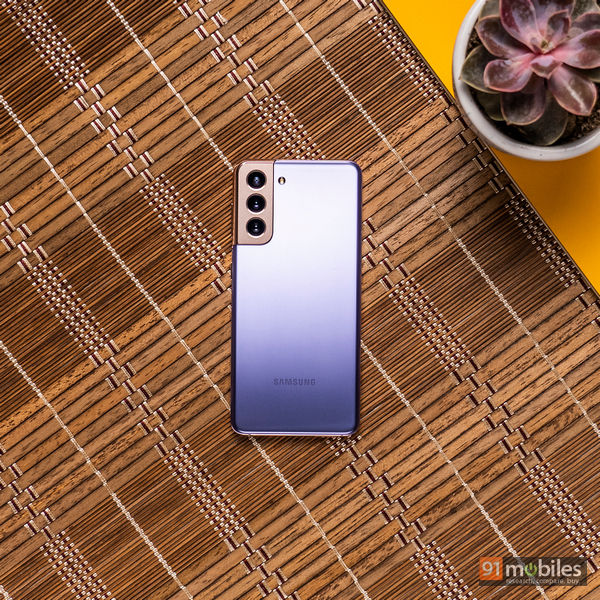
Verdict
I’m usually a big phone person, but I’ll make an exception for the Galaxy S21. Notwithstanding the build material, the S21 oozes every bit of the premium-ness you associate with top-end Samsung flagships. If it is a wholesome Android experience you are looking for in a compact form factor, look no further than the Galaxy S21.
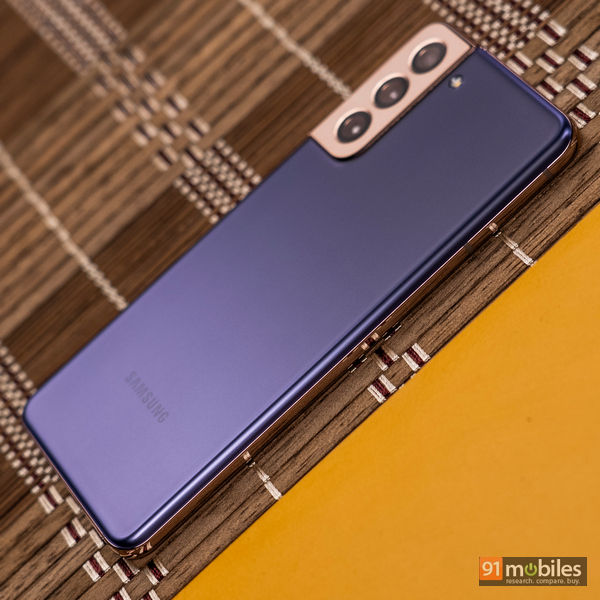
Galaxy S21 vs S21+: the differences
From what I could make out, there are three key differences between the regular S21 and the S21+: screen size, battery capacity, and build material. In case it wasn’t obvious when you looked at them, the S21 is the smaller of the two phones. You get a 6.2-inch display which uses Samsung’s acclaimed Super AMOLED panel, with the selfie shooter housed in a punch hole at the top. The S21+ is slightly bigger at 6.7-inches, with all other attributes remain the same. This includes the FHD+ (1,080 x 2,400) panel, HDR10+ certification and the 120Hz adaptive refresh rate. Interestingly, the S20 from last year had a WQHD+ (1,440 x 3,200) screen resolution but the refresh rate could only go to 120Hz if the resolution was down to FHD+. So in a way, I’m not missing the higher resolution of the S20’s panel since I prefer the higher refresh rate. The smaller size on the S21 does give the device a slightly higher pixel count than the S21+, but that will be barely noticeable.

What will be immediately noticeable is how perfectly the phone sits on your palm. My preference has been big phablets although my hands are not the largest. However, the snug fit of the S21 has kind of changed my perspective. The S21+ is half an inch bigger, which doesn’t make it the most comfortable to hold. Bezels around the S21’s display are non-existent which gives you a bigger screen real estate while keeping the device’s length short. Granted the smaller screen is not as immersive as the one on the S21+, but that really didn’t seem to be an issue for me. In fact, it makes the phone more pocketable. The S21 is also lighter than the Plus due to the lower capacity battery on the former.
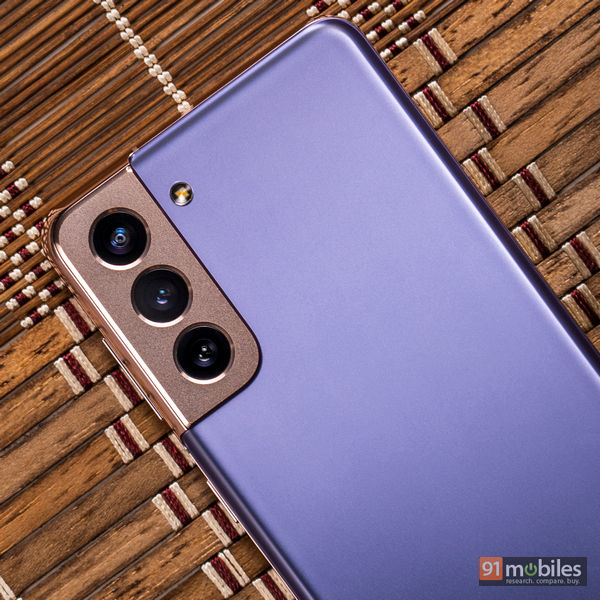
Another major difference between the two devices is the choice of build material. While the S21 Plus’ back is made from Corning’s Gorilla Glass Victus, the regular S21 is made from polycarbonate which Samsung insists on calling ‘glasstic’. Now I’m no fan of plastic backs, but in the case of the S21, the craftsmanship is so good that it is virtually indistinguishable from matte-finished glass. The look and feel are quite premium. The only downside I can see is that the S21’s back might get scratched more easily but at the same time, it should be able to survive accidental falls.
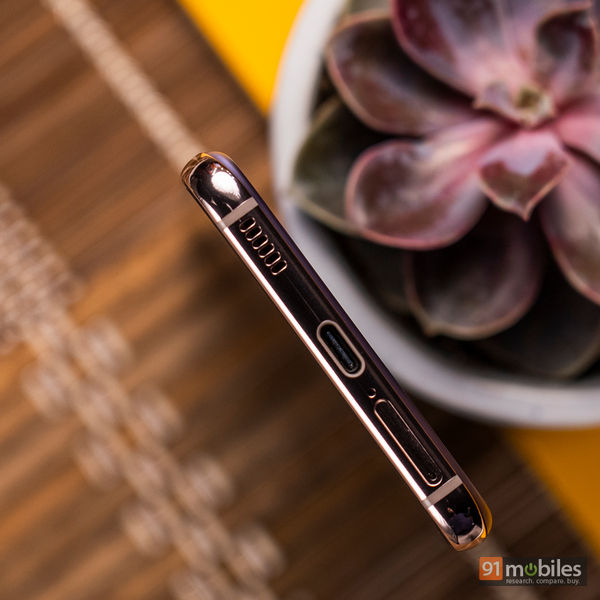
Lastly, the battery size on the Galaxy S21 is 4,000mAh, which is lower than the 4,800mAh present on the S21+. During normal usage, the S21 does indeed drain out a tad bit faster than I would’ve liked, even though the Exynos 2100 chipset is a 5nm chipset with class-leading power efficiency.

However, putting up with a super bright panel that can push 120 frames per second does take its toll on the battery. Consequently, PCMark’s Battery 2.0 test yielded a low score of 8hr 22min. Even my regular battery test of looping a video showed that the device lasted 19 hours, which is one of the lowest times I have seen while testing. In reality, I managed about 4 hours of screen-on time which did get shortened after a significant gaming session.

Galaxy S21 vs S21+: the similarities
Everything else about the two phones remains the same and this includes the triple-camera setup in that unique contour design. Apart from that, there is the Exynos 2100 chipset, 8GB RAM with 128GB and 256GB storage variants, no expandable memory slot, 25W charging, in-display ultrasonic fingerprint reader, and 5G capabilities.
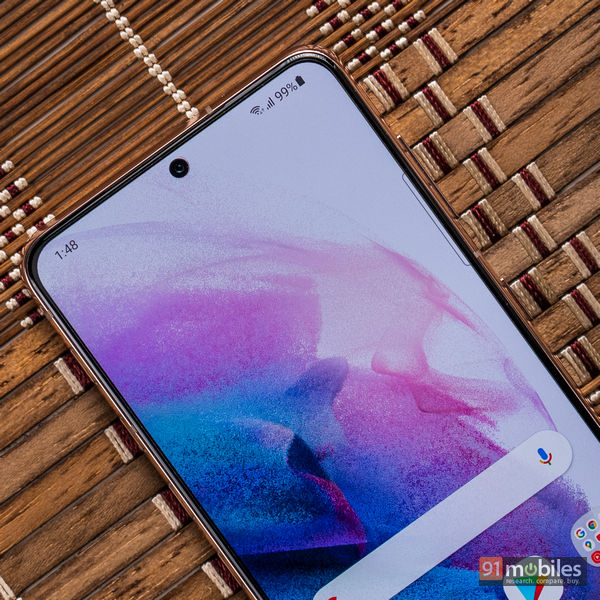
Samsung’s use of the Exynos 2100 chipset has been quite instrumental in the fluidity of the S21’s experience. This is the first 5nm fabrication from Samsung and it works every bit as well as you’d expect. This is apparent from the overall Antutu score of 639,170 on the S21 which is just a shade higher than the S21+’s score of 626,954. On Geekbench 5 however, the S21 has single-core and multi-core scores of 896 and 3,254 which fall just below the S21+’s 1,068 and 3,349. In real-world usage, any noticeable difference in performance is negligible. The S21 is just as fast as a top-end flagship smartphone is expected to run. The same can be said for the GPU on the device which will easily push even the heaviest games at the maximum possible graphics and frame rate settings. There are attributes that are expected to accompany the phone’s enormous price tag. Also, both the S21 devices use Samsung’s OneUI 3.1 proprietary skin which is based on Android 11. You can head over to the S21+ review for a more detailed understanding of the company’s software.
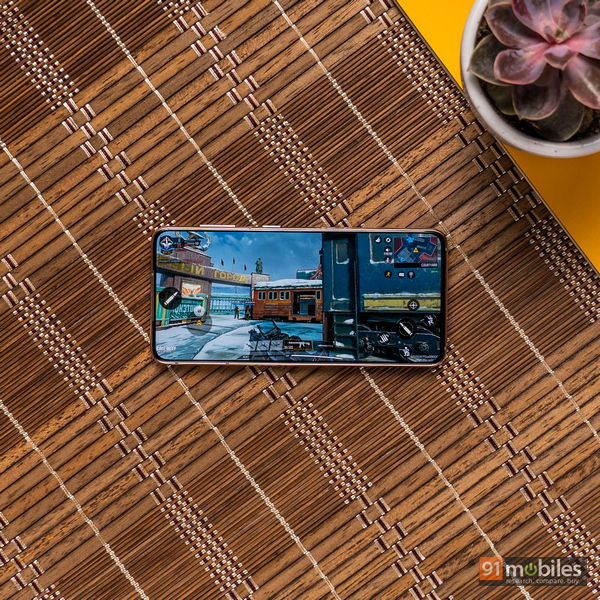
The S21 and S21+ are both 5G-ready devices but there still appears very little clarity on when we can actually use 5G services in India. However, since flagship devices do tend to last a couple of years at the very least, you can consider the device’s 5G capabilities in the interest of futureproofing. Other features include the AKG-tuned stereo speakers on the S21 which provide one of the best audio experiences you’ll get on a smartphone. They have excellent clarity, depth, get quite loud, and have nearly no distortion even at max volume. The ultrasonic fingerprint reader also remains the same on both devices and is just as fast and accurate.
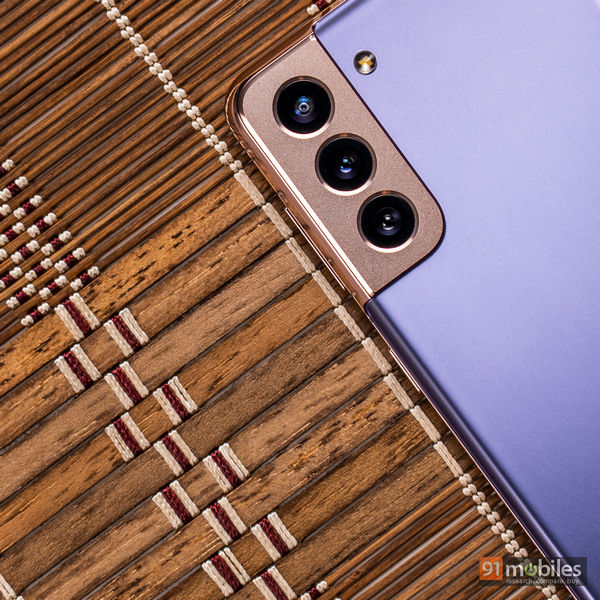
Finally, there are the optics on the S21 which, as mentioned are the same as the S21+. It comprises a 12MP ultra-wide lens, 12MP wide-angle lens, and a 64MP telephoto sensor. Anything I can say about the brilliance of the S21’s camera setup has been put quite eloquently in my colleague’s S21+ review. However, here is a short summary. You get the best of Samsung’s camera experience just short of the S21 Ultra. Crystal-clear clarity in daylight shots with excellent detailing even in very bright areas. Dynamic range and exposure calibration are both top-notch. The scene optimiser does tend to bring out a tad bit more saturation than I would’ve liked but it is ideal for social media sharing. The telephoto sensor’s high 64MP resolution allows for 3X hybrid zoom which can be digitally enhanced to 30X. Completing the ensemble is the 12MP ultra-wide sensor which again performs quite well in daylight conditions while detailing will take a hit in low-light. Speaking of which, the phone’s Night mode is an exceptional piece of software brilliance that can pull a significant amount of details even from the darkest of scenes. Even without its usage, the S21 will churn out decent shots and I only felt the need for the Night mode when there was extremely low visibility and no supporting light from nearby street lamps. The selfie capabilities on the 10MP shooter are very good with a touch Samsung oversharpening but otherwise maintaining reasonably well facial features.
Verdict
I think the Galaxy S21 makes a lot of sense for people looking for a premium compact smartphone with good looks and powerful performance. The feel-good factor of the S21’s matte build is quite satisfying and the premium flagship design will no doubt turn heads. On top of that, you get a stellar display, AKG-tuned stereo speakers, exceptional cameras, IP68 certification, Android 11, and more. At a Rs 69,999 price point, very few devices stand in the competition, and right off the bat, I can only think of the iPhone 12 mini (review) which is priced similarly starting at Rs 66,990, but only for the 64GB version. You would need to shell an additional Rs 5,000 for the 128GB version and even then the only advantage the 12 Mini has is arguably in the software department. Buy the Galaxy S21 if you are in search of a compact flagship that delivers in almost all aspects, and can live with the average battery life.
Editor’s rating: 4 / 5
Pros:
- Stunning design
- Capable performer
- Great cameras
Cons:
- Battery life will leave you wanting
- No expandable storage
 Samsung Galaxy S21
Samsung Galaxy S21
|
vs |
 Apple iPhone 12 Mini
Apple iPhone 12 Mini
|
 Samsung Galaxy S21
Samsung Galaxy S21
|
vs |
 Samsung Galaxy S20 Plus
Samsung Galaxy S20 Plus
|
























